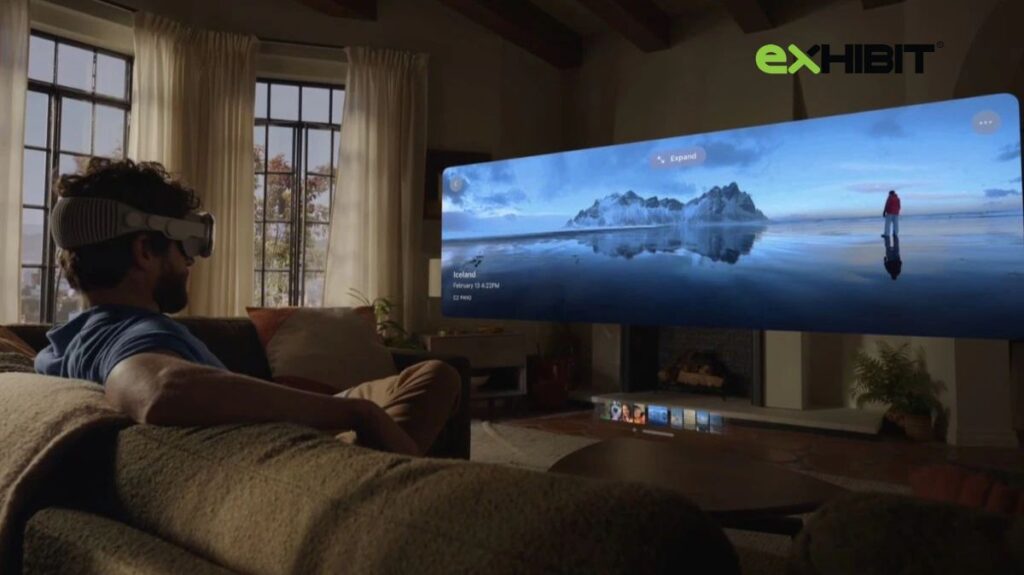Apple is reportedly preparing to grow its extended reality (XR) portfolio with several new products by 2028, according to renowned supply chain analyst Ming-Chi Kuo. The tech giant is expected to launch a range of head-mounted devices, including lightweight XR headsets, smart glasses, and XR display-equipped eyewear, over the next few years.
M5-Powered Vision Pro Headset Could Launch in 2025
Kuo reports that Apple may launch a new M5-powered version of the Vision Pro headset by the end of 2025. This upgraded version is likely to offer improved performance while maintaining the premium features of the existing model.
No New XR Devices in 2026, Vision Air to Launch in 2027
Apple is not expected to release any new XR hardware in 2026. However, 2027 will mark a major milestone with the potential launch of the Vision Air, a “significantly lighter” and more affordable XR headset compared to the current $3,999 Vision Pro. This new device is rumored to be powered by Apple’s latest iPhone chip for a more compact and efficient experience.
Apple Smart Glasses Could Arrive in 2027
Alongside the Vision Air, Apple may also unveil a pair of smart glasses in 2027. According to a report by The Verge, these glasses are expected to support voice commands, gesture controls, video capture through onboard cameras, and AI-based environmental sensing, marking a major step into AI-integrated wearables.
Apple XR Product Launch Timeline (as per Kuo)
Here’s the estimated production and release timeline for Apple’s upcoming XR hardware:
- M5-powered Vision Pro: Q3 2025
- Vision Air (lightweight headset): Q3 2027
- Second-generation Vision Pro: H2 2028
- Smart Glasses (Ray-Ban-like): Q2 2027
- XR Display Glasses: H2 2028
- XR Display Accessory: H2 2026
Rising Competition in the XR Market
Apple’s aggressive push into XR comes as competitors like Meta and Google step up their efforts.
Meta’s Oakley Meta Glasses
Meta, in collaboration with Luxottica-owned Oakley, recently launched the Oakley Meta Glasses, targeting outdoor and sports-focused users. Features include:
- 3K video recording
- 8-hour battery life
- Charging case with 48-hour capacity
The Oakley Meta HSTN smart glasses are priced at $499 and will be available for preorder on July 11 in limited markets, including the US, Canada, UK, Europe, and Australia.
Also Read: Indian Railways Introduces RailOne App: How to Book IRCTC Tickets, Track PNR & Order Food
Google’s Android-Based XR Glasses
Meanwhile, Google unveiled its Android-based XR glasses at the I/O 2025 conference, showcasing capabilities like:
- Messaging
- Navigation
- Real-time translation
- Photography via lens displays
Paired with Gemini AI, the glasses can use contextual information from onboard sensors, cameras, microphones, and speakers without needing direct phone access.
Apple’s XR Future: Innovation Meets Competition
With multiple products planned between 2025 and 2028, Apple is gearing up to become a major player in the XR space. Its entrance will likely intensify competition, forcing rivals to innovate faster as Apple blends cutting-edge hardware with its ecosystem-driven strategy.
Stay tuned as the future of extended reality unfolds with Apple, Meta, Google, and others racing to redefine the smart wearable experience.



2 Comments
Pingback: From Moradabad to Cupertino: Apple Names New COO
Pingback: Foxconn Recalls Majority of Chinese Workers